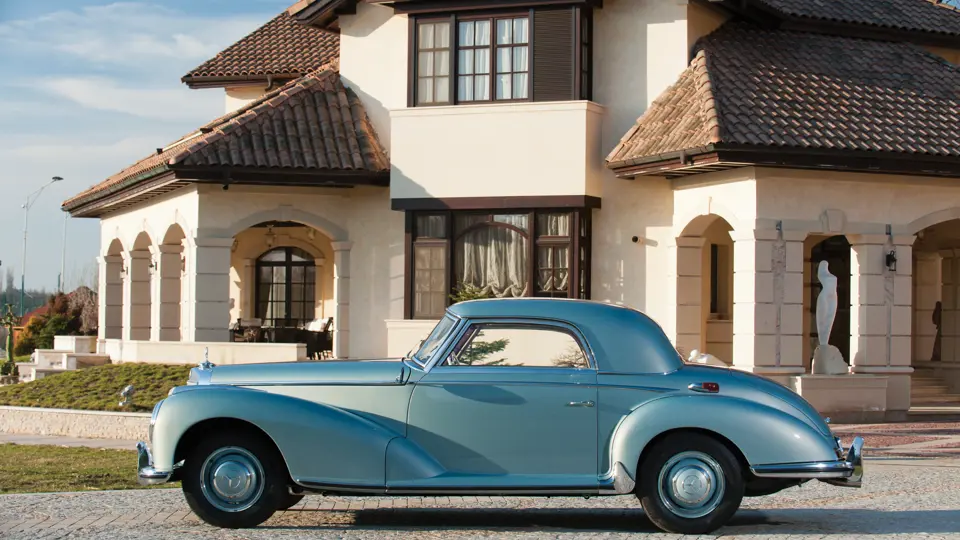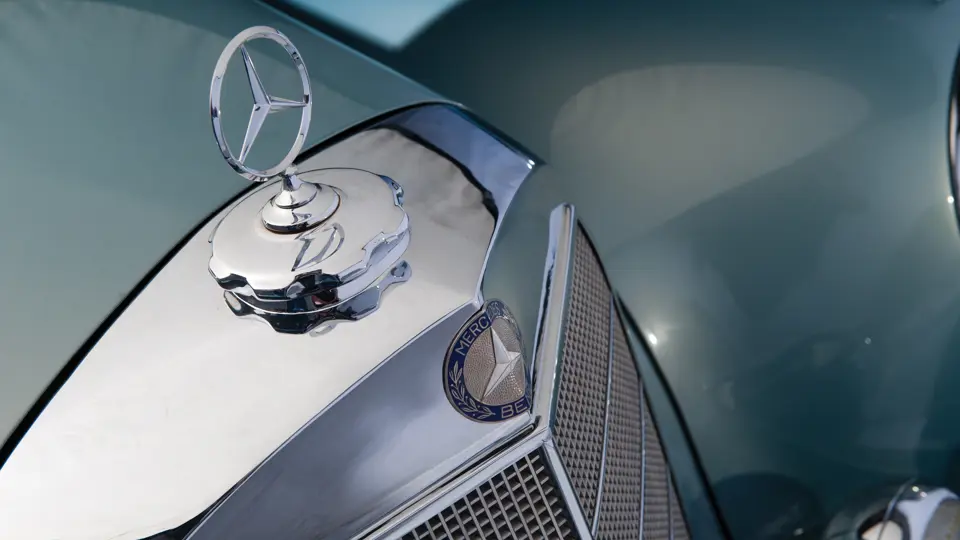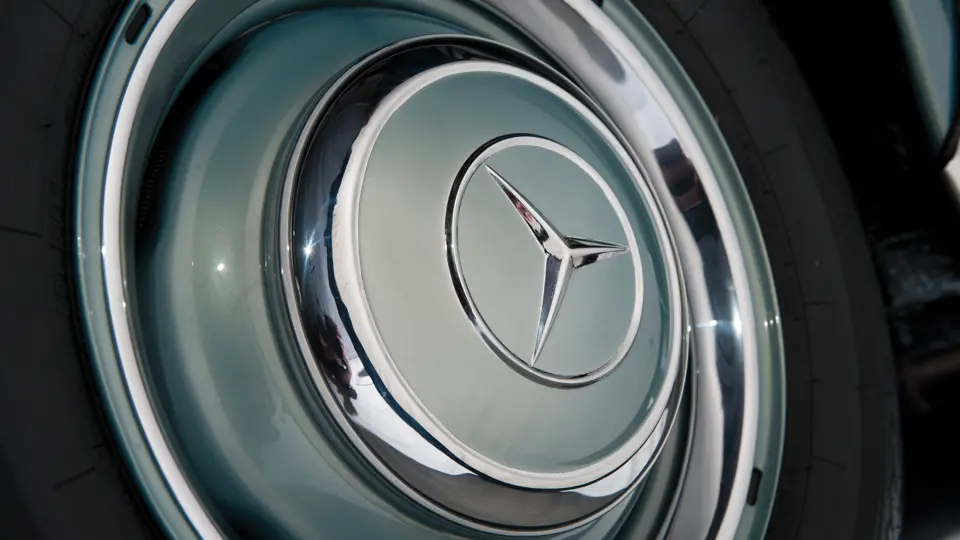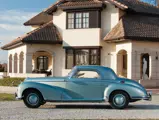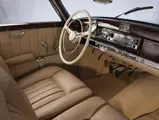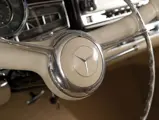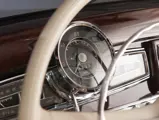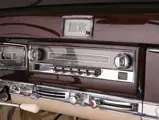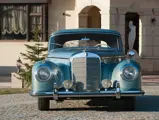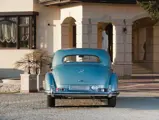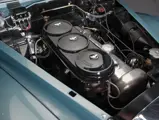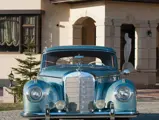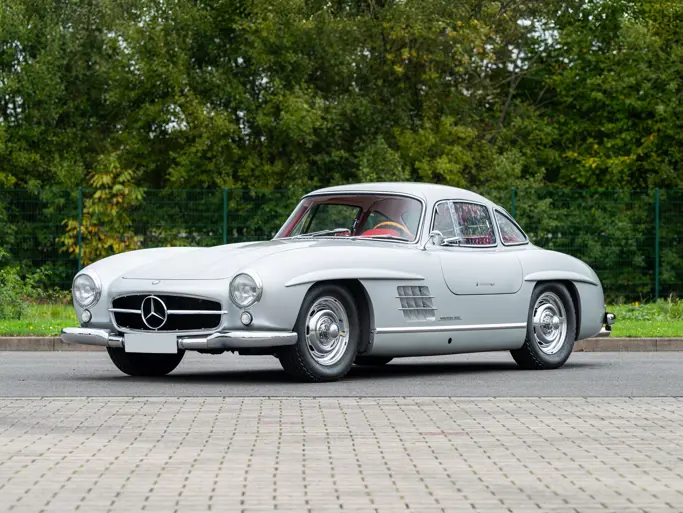150 hp (DIN), 2,996 cc SOHC inline six-cylinder engine, four-speed manual gearbox, four-wheel coil-spring independent suspension with control arms in the front and swing axles in the rear, and four-wheel hydraulic drum brakes. Wheelbase: 2,946 mm
Moteur six-cylindres en ligne, 2 996 cm3, 150 ch (DIN), un ACT, boîte manuelle quatre rapports, suspension avant et arrière indépendante avec ressorts hélicoïdaux, tirants à l'avant et demis-essieux oscillants à l'arrière, freins hydrauliques à tambour sur les quatre roues. Empattement: 2 946 mm.
The 300 series was introduced at the Frankfurt Auto Show in 1951 and was designed specifically for the export market. Its beautiful design featured a modern wraparound windshield and flush-mounted headlights. Initially, the series was only available in four-door configuration as either a saloon or cabriolet.
The 300 S, or Super, model was introduced in mid-1952, and it combined elements of the existing 300 series with the upcoming but delayed 300 SL sports car. The most notable enhancement was a 30 percent increase in horsepower, from 115 to 150, and it was praised by the motoring press for reaching a remarkable top speed of 110 mph. It also had a wraparound windshield, graceful wing lines, and a curved rear body line. The comprehensive list of standard equipment included no-glare mirrors, vacuum-assisted brakes, backup lights, reclining seats, and windshield washers. With a price tag starting at $12,680, these cars cost as much as 10 standard cars, and as a result, only approximately 560 examples of the 300 S were built, with 216 of those being coupés. Of course, such exclusivity resulted in an enviable list of wealthy and famous clients, including the Aga Khan, Gary Cooper, and Cary Grant.
More importantly, the 300 S introduced three sporty new bodies on a 25-centimetre shorter chassis; these three body styles were a coupé, cabriolet, and roadster. Although the styling was fresh and modern, the interior was most impressive. In comparison to the spartan automotive furnishings of some of its contemporaries, the new 300 S featured a lavish interior with supple leather, glossy and perfect burled walnut trim, a dash with chrome-accented instruments, and switchgear that was made with the precision of fine jewellery.
This 300 S is one of those 216 coupés. It has been subjected to a full and comprehensive restoration, and it is very attractive in icy blue-green metallic, which nicely harmonises with a tan leather interior and matching carpet. The luggage compartment is finished in a similar motif. The instrument panel is superbly finished and includes correct VDO gauges in English units, a radio, and an electric clock. The engine compartment is clean in all respects.
Over the years, the W188 coupé and cabriolet models have become much more popular than the larger saloons and phaetons, with their sporting nature winning out over the more formal larger cars. The long-wheelbase Cabriolet D is the exception, and the coupé, epitomised by this car, is the rarest 300, with just 216 built. This 300 S is one of the finest examples of one of the most sought-after post-war Mercedes-Benz cars, and it is a very viable alternative to a 1950s Bentley Continental.
La série 300 a été présentée au Salon de Francfort 1951, spécifiquement destinée au marché export. Son dessin magnifique comportait un pare-brise enveloppant et des phares encastrés dans les ailes. La série était initialement disponible uniquement en configuration quatre portes, limousine ou découvrable.
La version 300 S, ou Super, était dévoilée au milieu de l'année 1952 et combinait des éléments de la série 300 existante et de la 300 SL Papillon dont le lancement avait pris un peu de retard. L'amélioration la plus notable était l'augmentation de 30% de la puissance, qui passait de 115 à 150 ch, ce qui permettait à la voiture de recueillir les louanges de la presse pour sa vitesse de pointe de 177 km/h, remarquable pour l'époque. Elle recevait aussi un pare-brise enveloppant, une élégante ligne d'ailes et un arrière arrondi. Les équipements de série incluaient un rétroviseur anti-éblouissement, des freins dotés d'une assistance à dépression, des feux de recul, des sièges inclinables et un lave-glace. Avec un tarif démarrant à 12 680 $, ces modèles coûtaient dix fois le prix d'une voiture de base, si bien que la production de 300 S s'est limitée à 560 exemplaires, dont 216 étaient des coupés. Bien entendu, une telle exclusivité se traduisait par une liste de clients célèbres, comme l'Aga Khan, Gary Cooper et Cary Grant.
Par ailleurs, la gamme 300 S s'est enrichie de trois nouvelles versions sportives sur un châssis plus court de 25 cm, un coupé, un cabriolet et un roadster. Le style était nouveau et moderne, mais l'intérieur était encore plus impressionnant. Par comparaison avec l'habitacle spartiate de certaines de ses contemporaines, la nouvelle 300 S comportait un aménagement de grand luxe, avec du cuir souple, des garnitures en bois parfaitement verni, un tableau de bord affichant des instruments chromés et des commandes fabriquées avec la même précision que des bijoux raffinés.
Cette 300 S fait partie des 216 coupés. Ayant bénéficié d'une restauration extensive, elle est particulièrement séduisante avec sa couleur bleu glacé métallisé qui s'harmonise magnifiquement avec la sellerie en cuir brun et les tapis assortis. Le coffre présente une finition identique. Le tableau de bord offre une finition superbe et comporte les compteurs VDO corrects en unités anglaises, une radio et une montre électrique. Le compartiment moteur est impeccable.
Au fil des ans, les coupés et cabriolets W188 sont devenus plus appréciés que les limousines fermées ou découvrables, leur personnalité sportive étant plus attrayante que les versions plus grosses et plus formelles. Le Cabriolet châssis long constitue une exception et le coupé, symbolisé par cette voiture, correspond à la plus rare des 300, avec seulement 216 exemplaires. Cette 300 S est un des meilleurs exemplaires de l'une des Mercedes d'après-guerre les plus recherchées, et constitue une alternative très pertinente aux Bentley Continental des années 1950.




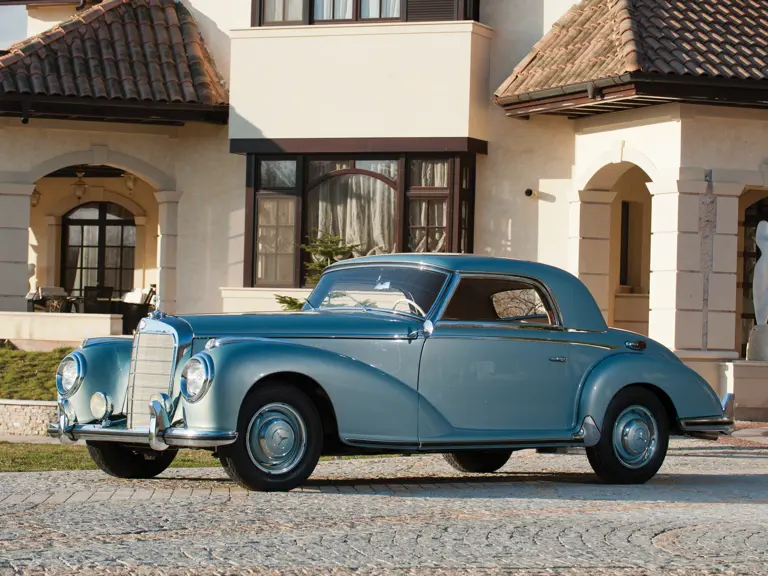
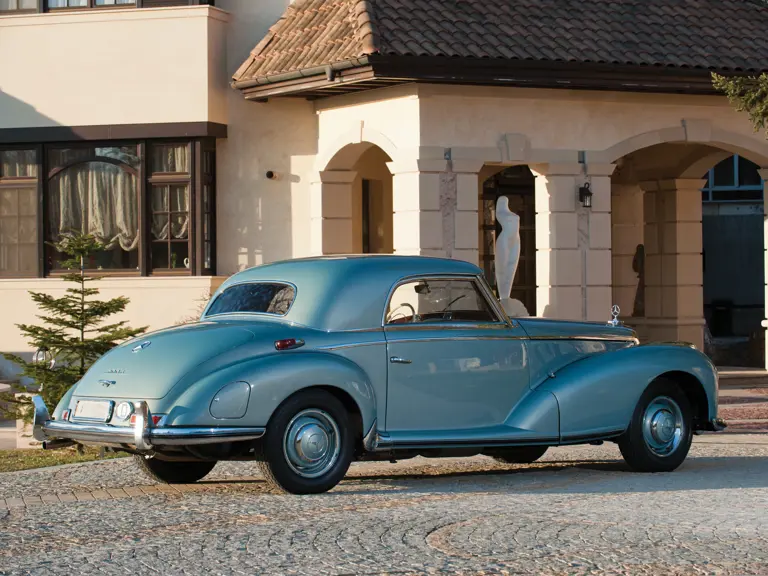
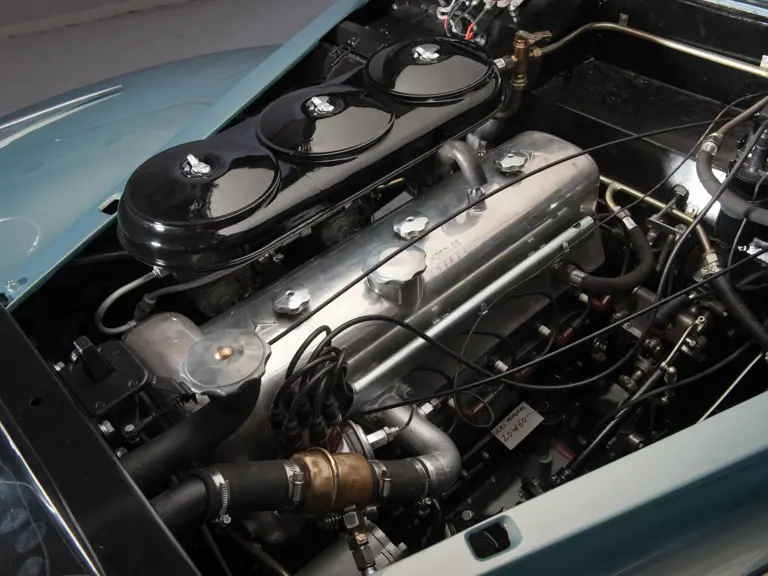
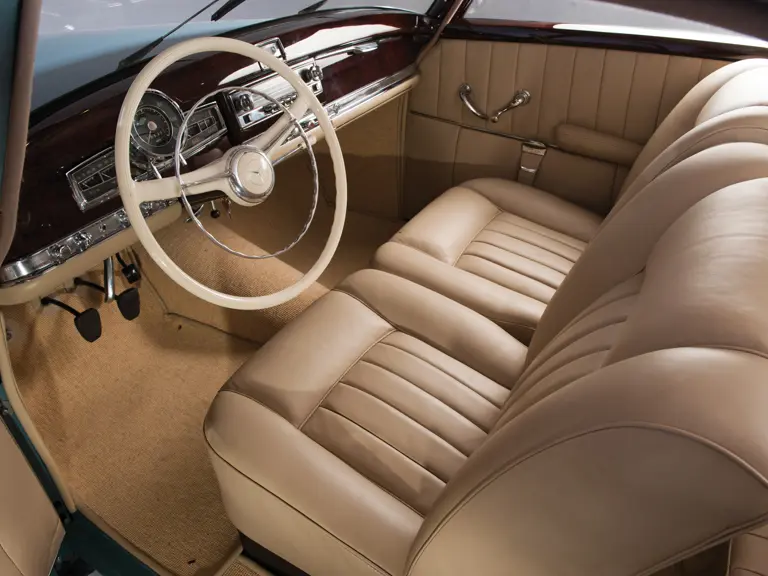
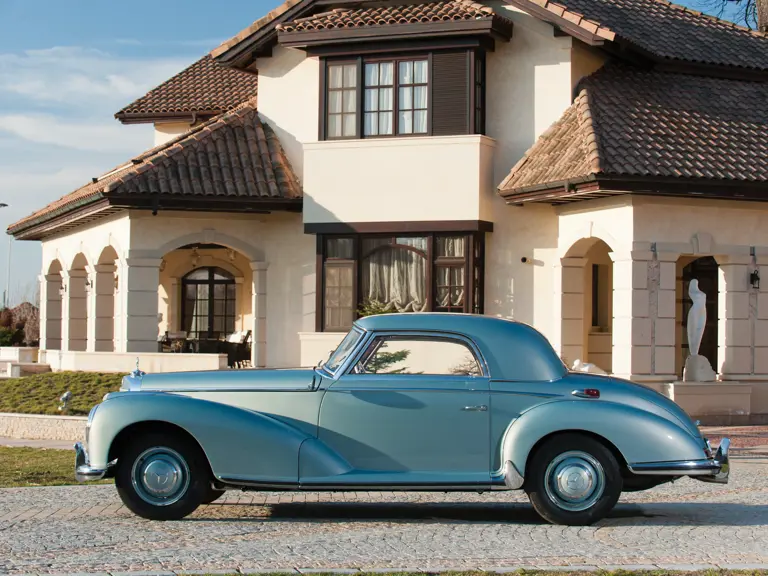


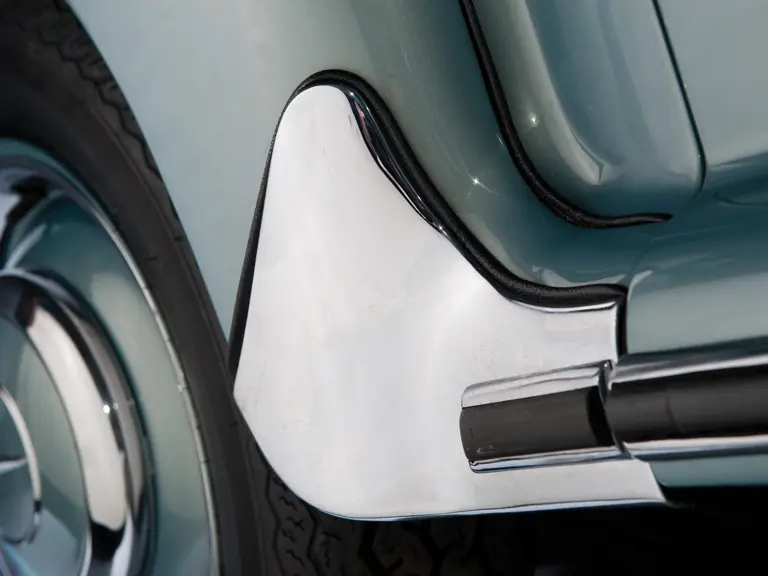
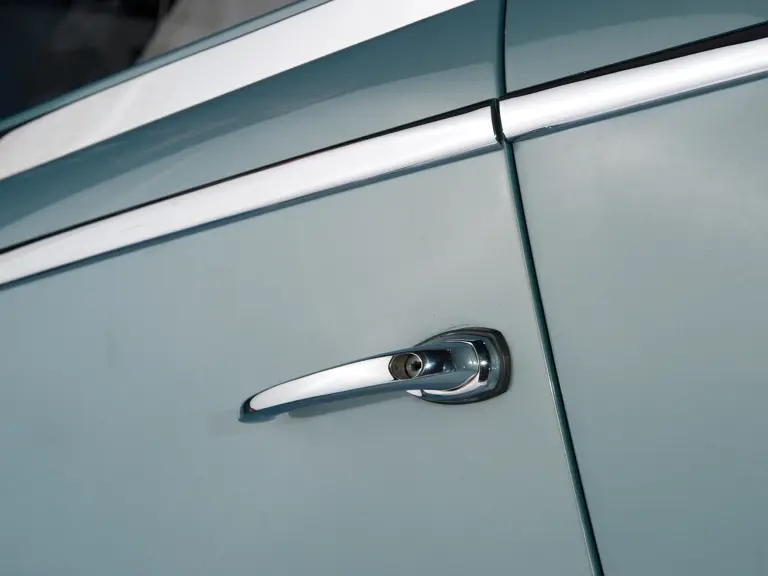
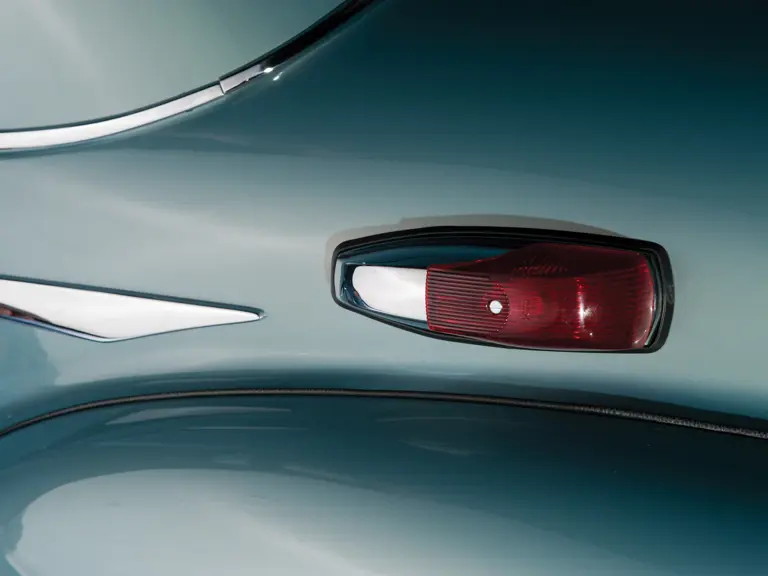
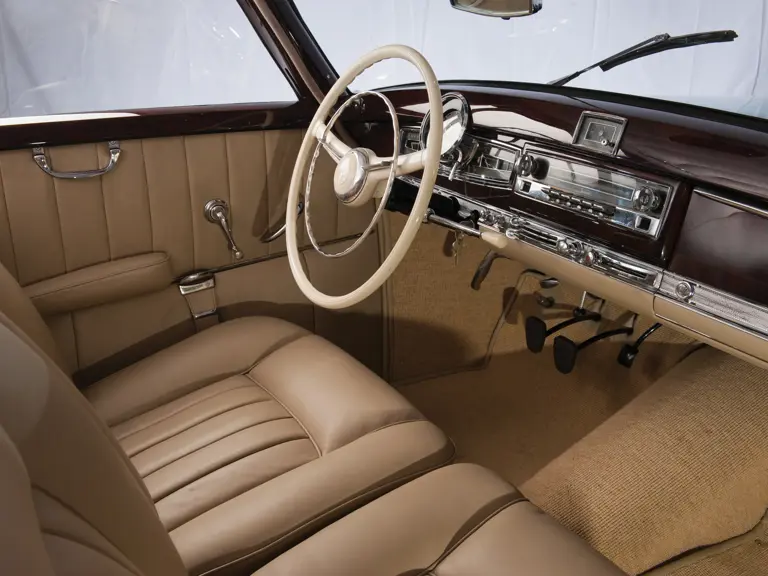
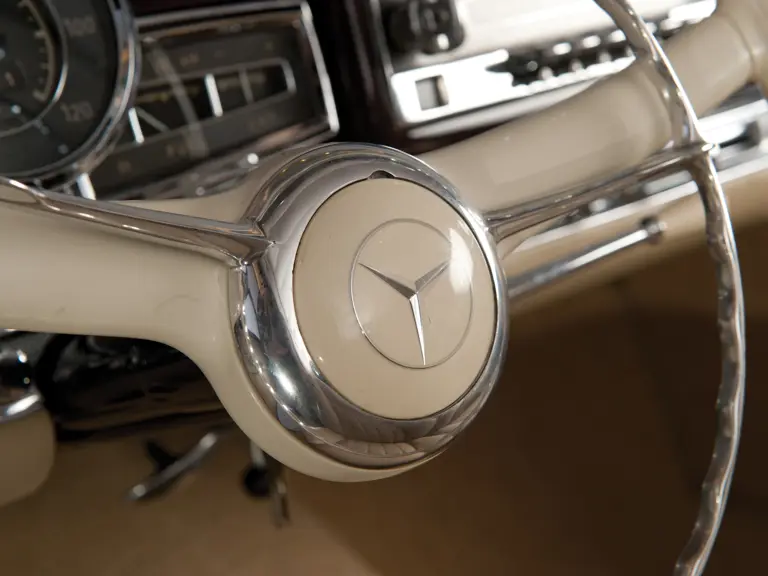
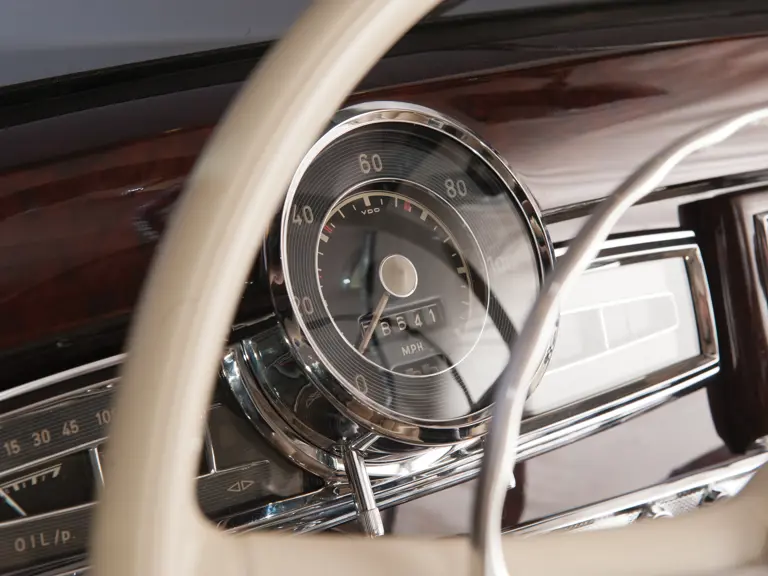
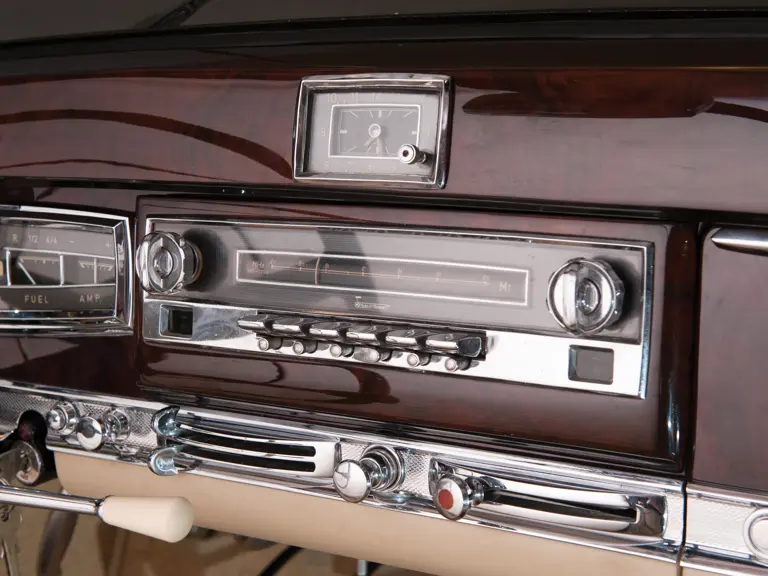
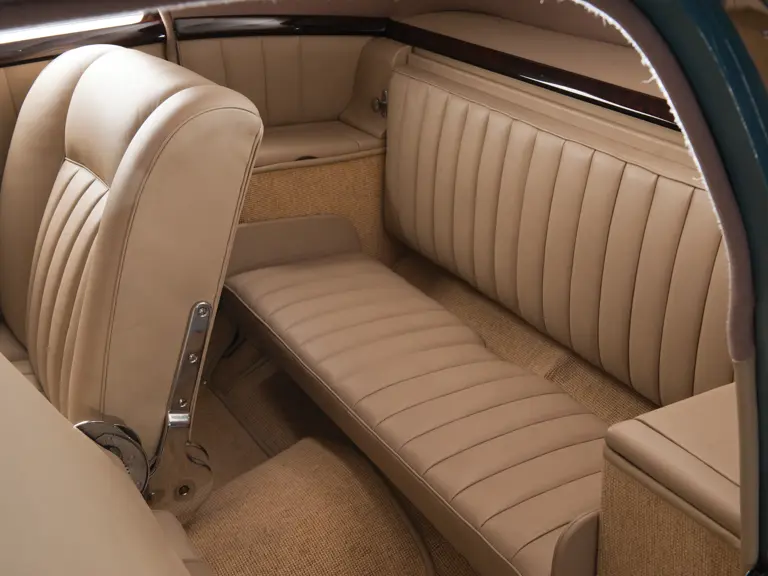
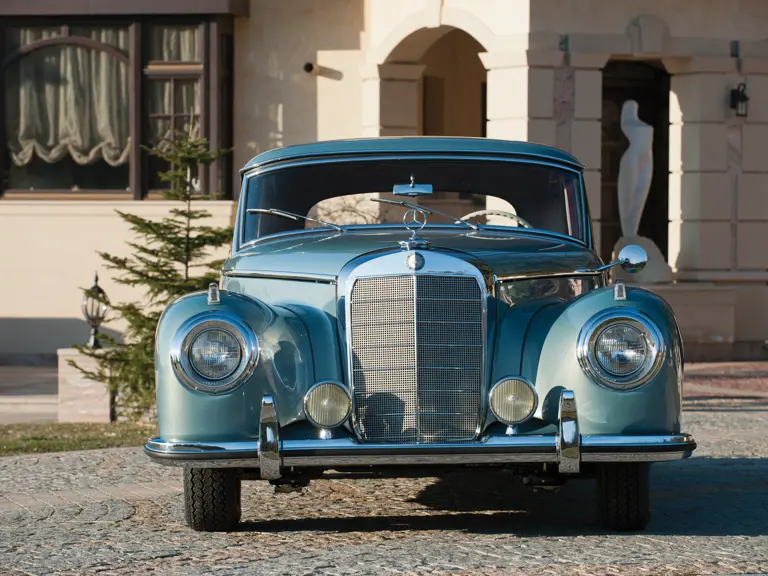
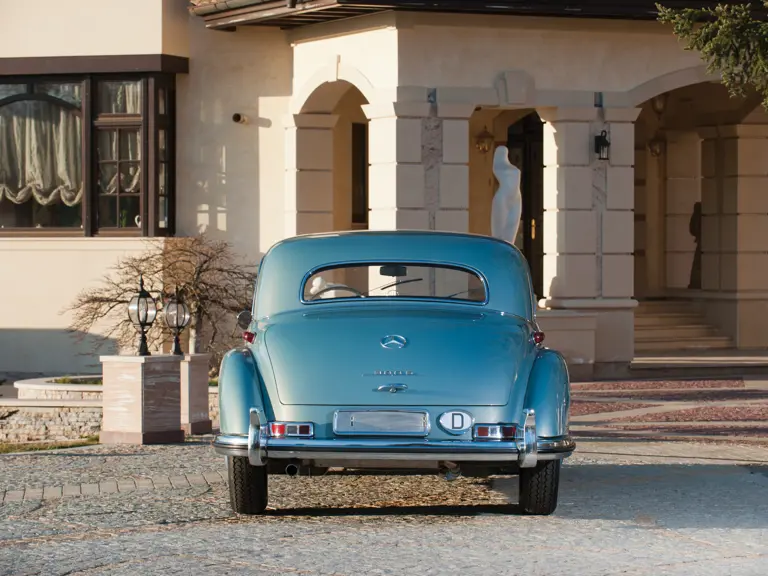
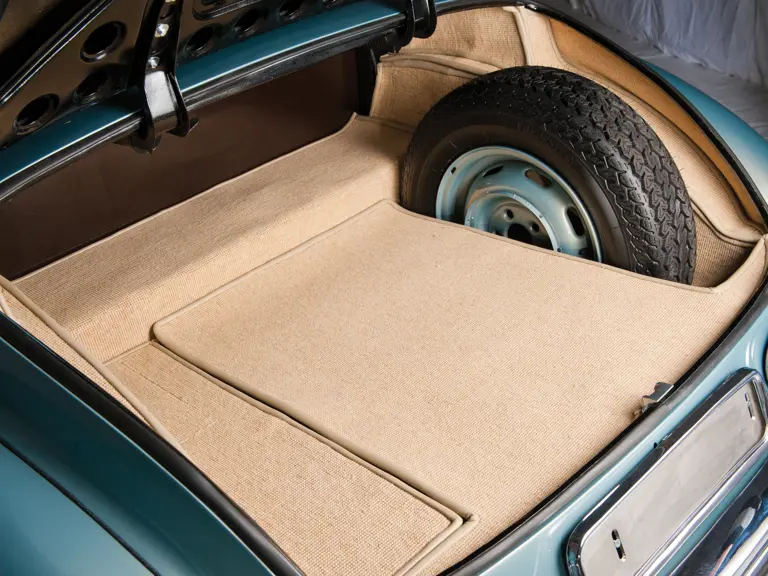
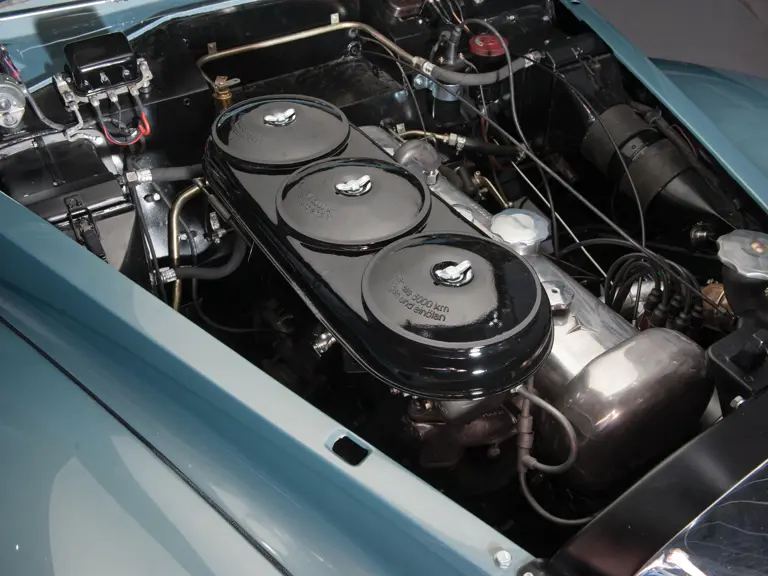
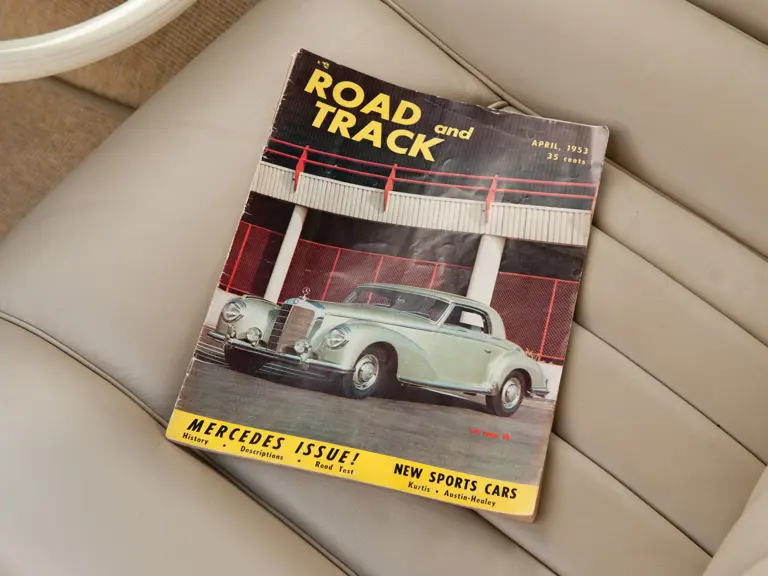
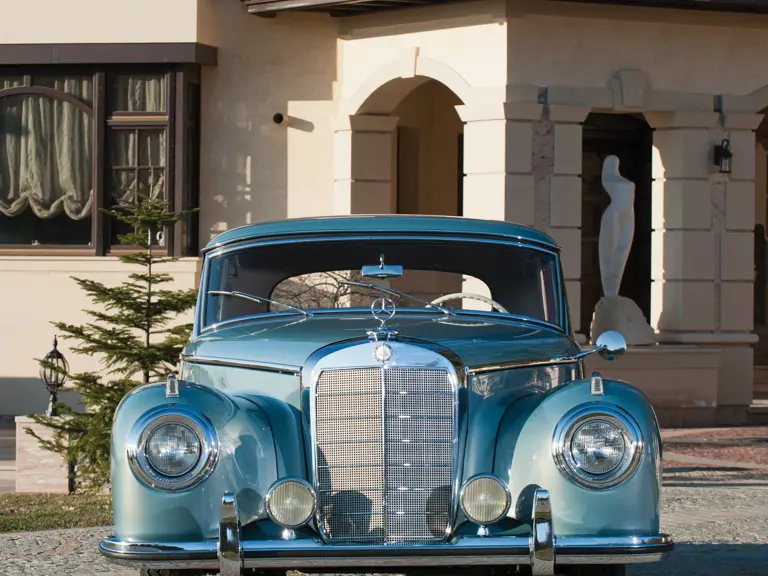
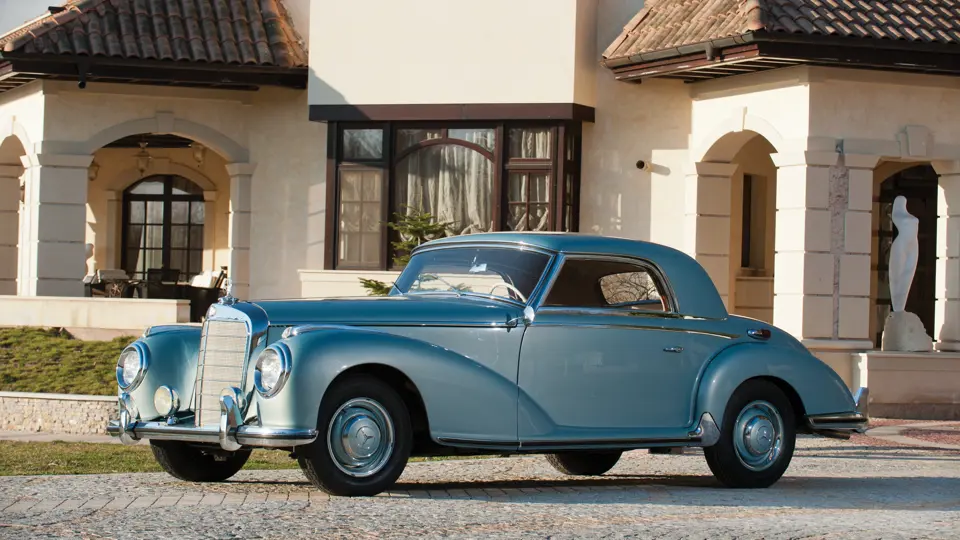
 | Monte Carlo, Monaco
| Monte Carlo, Monaco
